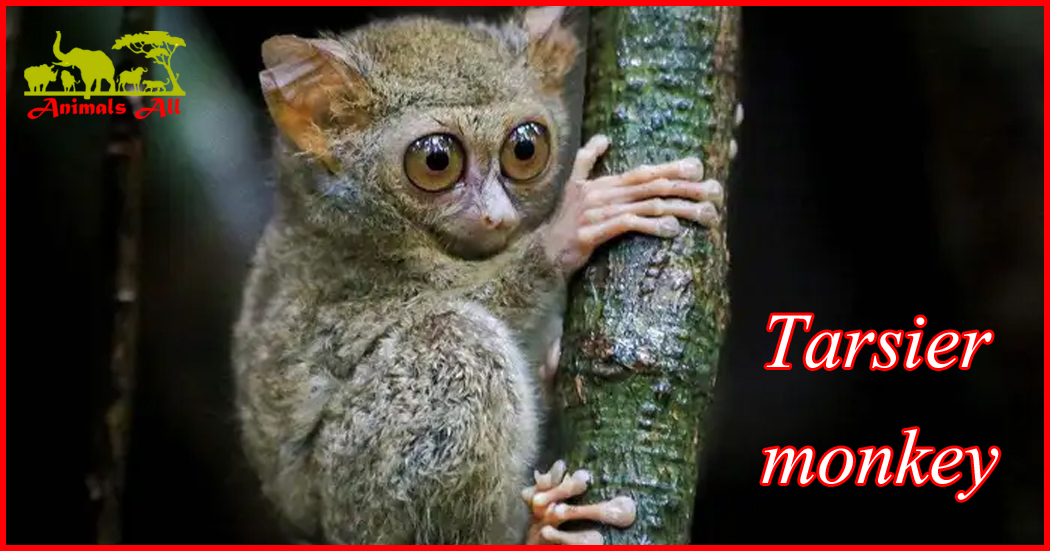
Tarsier monkey , The smallest monkey species in the world
The tarsier is a rare species of small monkey and the smallest known monkey species in the world. Also known as tarsus, it belongs to the tarsus-type tarsier family of primates, the suborder Rhinorrhea, and includes 3 species: tarsier, western tarsier and Philippine tarsier.
Special feature
On the small face, there are two big round eyes, the diameter of which can exceed 1 cm. It is very out of proportion to its small body, as if it is wearing a pair of oversized old-fashioned reading glasses.

Appearance feature
The tarsier is a highly specialized primate with a very small body, only 9 to 16 centimeters in size, 85 to 160 millimeters in length, 130 to 270 millimeters in tail length, and 80 to 165 grams in weight. It is an extremely small body. A primate.
The back hair is soft and gray with silver luster, and the belly hair is light gray. The head is round, the muzzle and neck are plated, the ear shells are thin and hairless, and the eyes are very large, up to 16 mm in diameter.
The forelimbs are short, the hindlimbs are long, and there are round suction cups on the tips of the toes, which can stay on many smooth surfaces.
The head is large and round, the eyes are very large, the face is forward, and the orbital space is thin. The eyes are adapted for night vision, and the retina has no cones. A short neck is characteristic of many jumping taxa.
Living habits
Tarsiers like to live in dense secondary forests and shrubs, and are also found in primary forests. They sleep during the day and are active at night. They can jump between branches at a distance of up to several meters, but they never go down to the ground. It has acute hearing and its neck can rotate almost 360°. It mainly preys on insects and also eats small lizards. When catching food, it moves very quickly.

Growth and reproduction
The female animal has 2 to 3 pairs of nipples, the gestation period is about 180 days, and she gives birth to one calf per litter, once a year. The cubs are only 6 centimeters long after birth. They are covered with down and their eyes have been opened. They can grab their mother or cling to branches as soon as they are born.
Distribution area
Tarsiers are native to Sumatra, Borneo, Celebes and the Philippines, and are now found in southern Sumatra and islands such as Samar, Leyte, Dinagat, Siargao, Bohol and Mindanao in the Philippines. It is rare in number and is an endangered species. There are 4 species in the world. In addition to the dwarf tarsier, there is also one that is also distributed on Sulawesi, called the Su Island tarsier; the other is called the Philippine tarsier, which is distributed in Mindanao, Samar and Leyte in the Philippines. and other places; there is also a species called the Sunda tarsier (also called the Malay tarsier, Bangka tarsier), which is distributed in the Greater Sunda Islands and Bangka Island in Singapore.
Endangerment level
When the last pygmy tarsier was taxidermied and placed in a museum in 1921, the animal was never seen again. Therefore, scientists believe that the pygmy tarsiers may have become extinct.
In 2008, this mouse-sized primate was accidentally discovered by scientists. It turned out that they had been hiding in the dense mountain forests of Indonesia. American researchers accompanied a local Indonesian research team to the top of a mountain at an altitude of more than 2,100 meters. They finally discovered four pygmy tarsiers and successfully captured two males and one female.

Protection level
Tarsiers are animals that are easily affected by the environment. If the environment they live in is damaged, their numbers will also decrease. The reproductive capacity of tarsiers is relatively low, so they have become endangered animals. Therefore, tarsiers are marketable and priceless. Even if someone wants to buy a tarsier as a pet, if it cannot be raised without a suitable environment, it is better to let it return to nature.


2 thoughts on “Tarsier monkey , The smallest monkey species in the world”